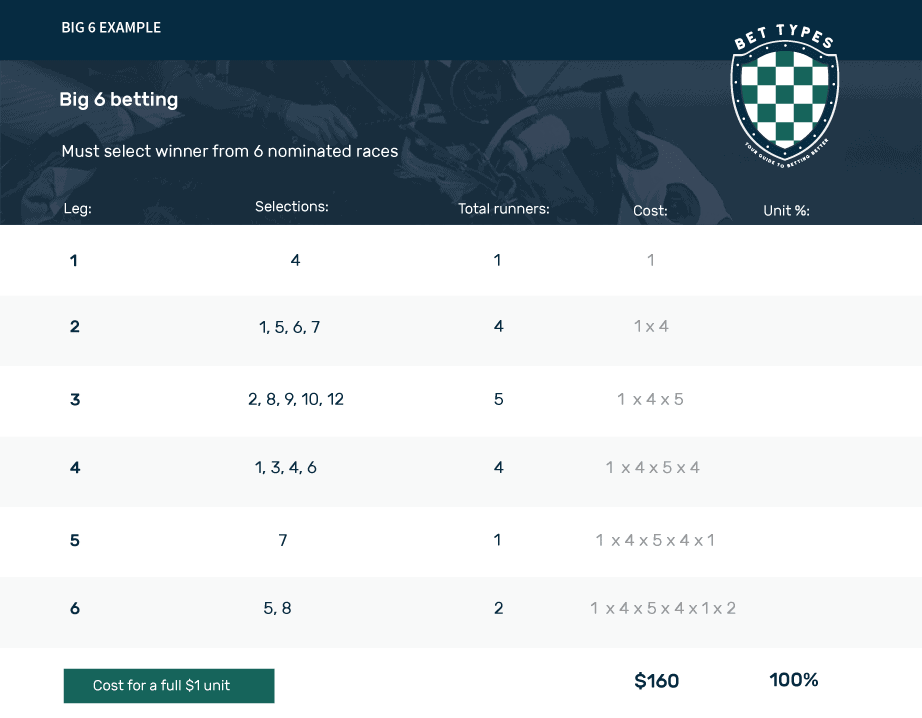The Big 6 is a bet type whereby the bettor must select the winner of each of the six consecutive Big 6 races.
The bettor can select any number of possible winners in each leg. It is also sometimes called a Straight 6. The Big 6 is the largest and most difficult of all the pari-mutuel betting products. Success is rare, but the dividend is generally very rewarding.

The example shows the cost of a Big 6 for a full $1 unit where the bettor has selected a varying number of runners in each leg. The key to keeping the Big 6 cost low is to select just one runner in as many legs as possible. Deciding to go for two runners instead of just one in just one of the six legs, will double the cost of the bet.
Not all bookmakers offer Big 6 betting. The dividend normally reflects that declared by the TAB. Online corporate bookmakers may cap the maximum payout amount for the Big 6, whereas the TAB will not.
The Big 6 is notoriously difficult to win. The tote pays out a smaller dividend for punters that select the winners of the first five legs only to be denied in the last race. The cost of placing a bet on the Big 6 is significant given that there are six multiplying legs. The cost is calculated by multiplying the number of selections in each leg and is based on the number of possible winning combinations. You can use our Big 6 calculator to price up the cost of your bet.
As with many other exotic horse racing bet types, it is possible to place a flexi bet and reduce the cost of the Big 6. Payouts for the Big 6 can total upwards of $400,000 so reducing the risk of the bet in return for a percentage of the dividend is a sound betting strategy.
The most similar bet type to the Big 6 is the quaddie. The quaddie contains four legs whereas the Big 6 has six, and so is far more difficult to win.